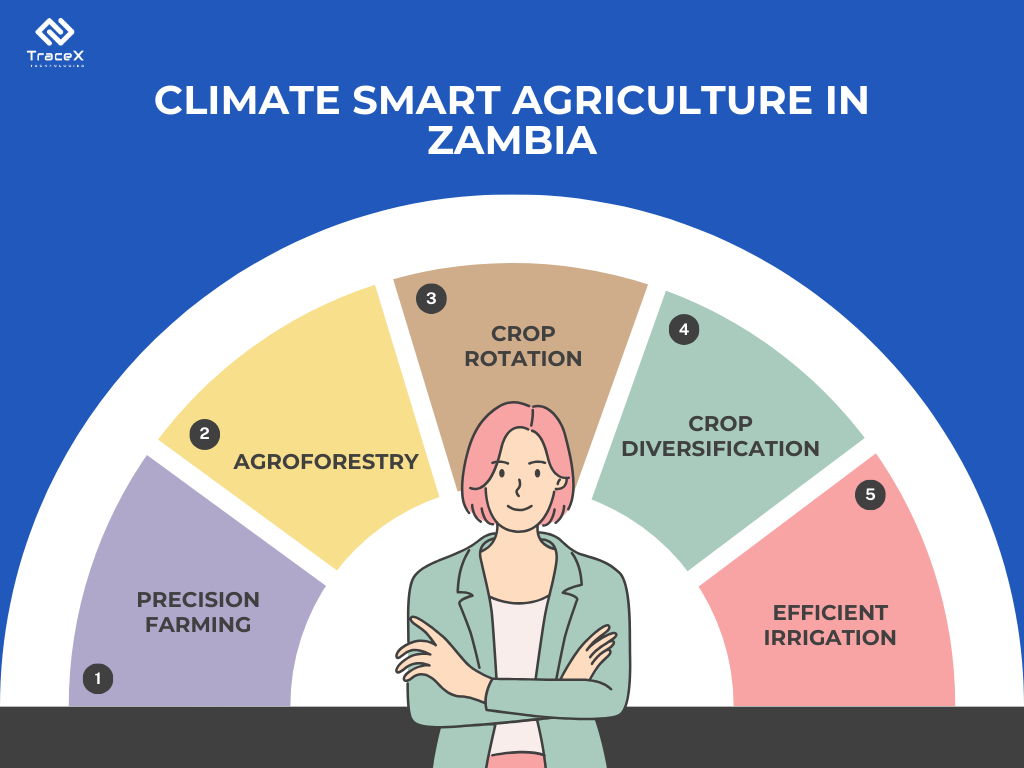Contact: +91 99725 24322 |
Menu
Menu
Quick summary: Explore the untapped potential of carbon farming in Zambia with our insightful blog. Discover how sustainable agricultural practices can mitigate climate change and benefit local communities while enhancing food security. Unlock the secrets to harnessing Zambia's carbon farming potential for a greener future.

Did you know that the very ground beneath our feet in Zambia holds the key to tackling climate change? While Zambia is known for its breathtaking landscapes and rich biodiversity, it also has the potential to be a frontrunner in a revolutionary practice – carbon farming. Carbon farming in Zambia has the potential to improve soil health, increase resilience to climate change, and give farmers with extra revenue options, all of which contribute to environmental sustainability and agricultural production.
Carbon farming refers to a set of principles and techniques that try to sequester carbon dioxide from the atmosphere and incorporate it into agricultural systems. These approaches include agroforestry, conservation tillage, cover crops, rotational grazing, and better animal management. Beyond carbon sequestration, carbon farming provides other advantages.
Zambia, a nation known for its vibrant landscapes and agricultural prowess, faces a significant threat – climate change. The impacts are already being felt, disrupting weather patterns and jeopardizing the livelihoods of millions who depend on the land. Here’s how climate change is affecting Zambia, and how carbon farming offers a powerful tool for mitigation:
Carbon farming practices offer a glimmer of hope in the fight against climate change. Here’s how it contributes to mitigation efforts in Zambia:
By adopting carbon farming practices, Zambia can not only mitigate the negative impacts of climate change but also build resilience for the future. This approach offers a win-win situation, improving soil health, boosting agricultural productivity, and contributing to a more stable climate for all Zambians.
Learn How Soil Carbon Sequestration Can Transform Agriculture!
Dive in to understand the benefits and techniques of soil carbon sequestration.
Zambia’s climate and terrain are ideal for various carbon farming approaches. The country’s tropical climate, with distinct wet and dry seasons, supports a variety of habitats, from savannas to forests, creating chances for carbon sequestration. Existing agricultural techniques, such as traditional subsistence farming and commercial agriculture, can be improved to increase carbon sequestration capacity. Conservation tillage, agroforestry, and enhanced pasture management can all help to sequester carbon in soil and biomass.

Maize, soybeans, and groundnuts are key crops for carbon farming and can be grown utilising conservation agriculture approaches. Agroforestry systems that include trees such as acacia, eucalyptus, and fruit trees with crops increase carbon storage capacity while diversifying farmers’ revenue streams. Furthermore, rotational grazing and silvopastoral systems can improve carbon sequestration in grasslands and pastures. Carbon farming, by incorporating these methods into Zambia’s agricultural landscape, can help to mitigate climate change, improve soil health, and provide rural communities with sustainable incomes.
Carbon farming in Zambia harnesses the power of agricultural practices to capture carbon dioxide from the atmosphere and store it in the soil. This natural process, known as carbon sequestration, offers a range of environmental and economic benefits. Let’s explore some key carbon farming techniques well-suited for Zambia’s agricultural landscape:
1. Cover Cropping:
2. Improved Fallows:
3. Biochar Application:
4. Reduced Tillage Practices:
While carbon farming holds immense promise for Zambia’s environment and agricultural future, there are several hurdles that Zambian farmers need to overcome to fully embrace this practice:
Addressing these challenges requires a multi-pronged approach involving collaboration between government agencies, NGOs, research institutions, and the private sector. By providing training, resources, and market access, these stakeholders can empower Zambian farmers to embrace carbon farming and unlock its potential for environmental and economic benefits.
Various stakeholders play an important role in promoting carbon farming in Zambia. The government can implement rules that encourage carbon-friendly agriculture techniques and offer incentives for adoption. Non-governmental organisations (NGOs) can provide technical help, capacity building, and community outreach programmes to promote awareness and strengthen local capability. The private sector can contribute to carbon farming projects by financing and executing sustainable agriculture methods, while international organisations can give finance, expertise, and knowledge exchange platforms. Collaborative efforts among these stakeholders can open up prospects for investment in carbon farming projects, such as developing carbon offset markets, implementing agroforestry initiatives, and funding research and development for breakthrough carbon sequestration methods. Such collaborations can harness resources, experience, and networks to expedite the adoption of carbon farming practices, contributing to Zambia’s climate change.
The global fight against climate change has brought carbon markets to the forefront. These markets allow entities to trade carbon credits, representing verified offsets of greenhouse gas emissions. However, ensuring transparency, accuracy, and efficiency in these markets requires robust technology solutions. Here’s where innovative tools like TraceX DMRV (Digital Monitoring, Reporting, and Verification) come into play.
TraceX DMRV offers a comprehensive suite of technologies designed to streamline and improve the carbon market by addressing these challenges:
Carbon farming in Zambia has enormous potential for reducing climate change and promoting sustainable development. Zambia can dramatically cut greenhouse gas emissions, improve soil health, conserve biodiversity, and improve rural livelihoods by implementing carbon farming practices widely. To realise this potential, authorities should implement supporting policies, offer incentives, and invest in research and capacity building. Farmers can embrace carbon farming techniques, enrol in training programmes, and seek assistance in implementing sustainable practices. Other parties, such as non-governmental organisations (NGOs), the commercial sector, and international organisations, should work together to provide financing, technical assistance, and market access. Working together, Zambia can harness the transformative power of carbon farming to create a resilient and successful agricultural economy while mitigating the effects of climate change.
Conclusion
Finally, carbon farming offers Zambia a promising option to mitigate climate change while also promoting sustainable agricultural development. Zambia’s unique climate and terrain provide ample chances for implementing carbon farming strategies such as agroforestry, conservation agriculture, and enhanced livestock management. Despite existing hurdles such as a lack of awareness and access to resources, combined efforts by the government, NGOs, business sector, and international organisations can overcome these obstacles. Zambia can fully realise the benefits of carbon farming by establishing supportive legislation, offering financial incentives, and investing in capacity building. Carbon farming, with commitment and teamwork, may not only mitigate climate change but also improve soil health, biodiversity conservation, and livelihoods, assuring a resilient and prosperous future for Zambian agriculture and the environment.
